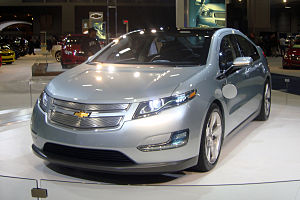There seems to be no escaping the fact that the price of gas is rising. It’s on the news, it’s in the papers and it’s one of the most common conversations among those who are paying for fuel. Many adults might reminisce about 1970 when a gallon of gas cost 36 cents, but those days are gone forever. Now it’s 2011, gas is surpassing four dollars a gallon in Connecticut, and many new drivers are looking for a solution to this costly problem.
Though the rising gas prices have been all over the media, the actual cause for this increase may be more complicated then it initially seems.
“When people think of rising crude oil and gasoline prices, the turmoil in the Middle East and the Deepwater Horizon disaster quickly spring to mind. However those are not the only two big drivers behind the increase in oil prices,” said Mark Schwabacher ’13, a co-president of the Staples debate team and member of Student Assembly who is knowledgeable about politics and current events.
Schwabacher explained that events like these have little actual impact, as they affect only a small portion of the massive oil supply system.
“One of the main causes of the sustained increase in oil prices in the last year is increased demand by developing nations such as China and India. Just this year, China surpassed America as the world’s largest energy consumer,” Schwabacher said.
Kristin Forbes, a professor at MIT and former member of the White House’s Council of Economic Advisers, also sees increasing foreign oil use as a cause of rising gas prices.
“Oil is priced in dollars on the world market. When the dollar is weaker, foreign currencies are stronger, by definition. That means people in other countries can buy more oil for the same amount of money… As people in other countries buy more, demand rises, and it drives up the price in dollars,” Forbes said in an interview.
Regardless of the cause for the rise in gas prices, students at Staples are certainly feeling the effect.
“My car used to take about $25 to fill, now it takes at least $35. The price increase means that more of my paycheck goes to gas, which is a bummer,” said Andrea Stefenson ’11, driver of a 2004 Honda Civic.
Many Staples students are looking for a solution to this gas problem in more fuel-efficient cars.
“If I had the option to get a new car, I would definitely choose to get a hybrid. They are usually a greater investment up front, but with gas prices on the rise and peak oil upon us, I think it would be better in the long run,” said Diana Somlo ’11, who currently drives a GMC Yukon XL.
However, hybrids have been on the market since the late ‘90s. What’s new are electric vehicles, which is why I took a test drive in the new Chevrolet Volt to see if this car is the answer to Staples students’ fuel problems.
First let me explain what makes the Volt unique. This car is called an extended range electric vehicle. According to Chevrolet, this means it can run for about 35 miles solely on an electric charge, after which the gas generator kicks in, giving the car a total range of 375 miles for one tank of gas and a full charge.
Right off the bat this sounds like the most practical electric vehicle. The Volt could be used like a normal car, as compared with a full electric vehicle like the Nissan Leaf that provides an electric range of about 100 miles, after which you are done, and it’s time to call a tow truck.
So the Volt seems like the best of both worlds, it produces zero emissions when electric, but its gas engine will prevent from ever being stranded.
At the dealership I saw the car for the first time. It’s not a bad looking automobile. The flat integrated rear taillights, filled-in grille section and stylized headlights give the car a futuristic look that fits its abilities. However, the overall shape of the car might turn off some potential buyers. The Volt essentially has similar proportions to the Prius due to a hood that is almost at the same angle as the windshield, and the rear that drops off flat after only a small slope from the roofline. Though this shape makes the Volt aerodynamic and therefore fuel efficient, it reduces the car’s ability to look sporty or aggressive.
On the inside of the car the traditional dashboard has been replaced with an LCD screen. When the car is running, this screen shows an abundance of information: battery range, gas range, combined range, driving efficiency and speed, just to name a few. While this display might baffle someone is technologically challenged, the average Staples student should feel right at home in the driver’s seat.
However, the rest of the interior is not nearly as impressive. The quantity of dark plastic on the doors and dashboard, as well as the cheap-feeling leather seats (“premium cloth” was actually the standard trim) were far from luxurious or exciting.
The salesman compared the ride noise of the car to a golf cart, an accurate description. Besides a bit of electrical whine, there is no noise from the engine, though the sound from the tires and outside air does seem louder as a result.
Since I don’t yet have a driver’s license, I couldn’t actually get behind the wheel of the vehicle. However, my dad, who did test it, said that the car felt adequately powered and that the steering and braking were both comparable to an ordinary gas-powered car.
Though the charging time of 10 hours may seem high to some people, this problem can be solved with the instillation of a 240-volt charging system. It can fully power the car in as little as four hours, which equates to the meager hours of sleep many Staples students get.
However, there is one looming problem with the Volt: price. The car’s MSRP is $41,000. It is eligible for up to $7,500 in tax credit from the government, but that is still $33,500, which is far from cheap.
Regardless of any savings, at $40,000, the Volt should be competitive with similarly priced cars like the BMW 3 series or Audi A4 that are also in the $35,000 to $40,000 range, and the quality of the Volt simply can’t compare with those vehicles. If you purchase the Volt you are really paying for the new technology, not a car that is worth that price overall.
“I’d like to consider a more energy efficient vehicle. The Chevy Volt sounds cool, but I think it is out of my price range,” said A.P Environmental teacher Michael Aitkenhead.
For less then half of the price of a Volt, a Staples student could buy a used car that is still energy efficient, like a Prius or Civic. Aitkenhead, who teaches A.P. Environmental Science, said that a student can then minimize his gas usage by simply keeping tires inflated, carrying only essentials in the car and sticking to low speeds and slow acceleration.
In the end the Volt is a good car and probably the most sensible electric vehicle on the market. However, it’s still a huge oxymoron: it’s an expensive way to save money on fuel.















































Carlye • Nov 13, 2011 at 10:32 pm
Your answer was just what I neeedd. It’s made my day!
Don Cacciato • May 1, 2011 at 8:38 pm
Guys, I think we’re really forgetting about something important here. God doesn’t want us to use alternative fuels! If you stopped sinning so much and read the Bible, you’d remember Romans 4:12: “And God commandeth the relinquishment and destruction of all alternative fuel sources, for they are the Devil incarnate.” We must remember the word of God, for if we do not, we will be subject to His wrath. While He is omniscient and all-forgiving, He may not forgive us for this travesty we have committed for so long outside of His knowledge.
Tina • Apr 27, 2011 at 11:43 pm
Take a look at gm-volt.com. You may be surprised that many Volt owners on the site drive Corvettes, BMW’s, even Ferrari’s and claim the Volt is actually more fun to drive.
As far as acceleration, it has 275 lb ft of torque at 0 rpm. Translation, instant, full, power to the wheels. Its faster off-the-line than many/most ICE (internal combustion engine) cars, something shared with most electric cars. Tip: next test drive, use Sport mode.
Cost? At $34k after tax credit, a fully loaded Volt is less than the Ford Edge my brother bought. The Bose sound system is sweet as if the full color, fully electronic dash. Remote start the car with a smartphone, 30GB harddrive, the perks go on and on.
But I can drive gas free for almost all my daily driving at a cost of $1.50 (electricity) for 40 miles, while still getting 37mpg driving cross country. No other car can do that. Since December, Volt owners has been averaging 800-1000 miles between gas fillups (80% of US drivers drive 40 miles or less per day – the Volt sweet spot). Many are getting 100-200MPG.
The Volt was also awarded Top Safety Pick scoring the top marks for front, side, rear and rollover crash tests. 8 airbags and a body made from HSS (high strength steel) help. YouTube has a great video search TRANSLOGIC 5.4 — Chevrolet Volt Test Drive.
Yes, OPEC hates this car.
Tony Ganino • Apr 27, 2011 at 10:16 pm
I would like to see them double that range sometime in the future to edge up to about 60 then 80 then 100 etc. The Volt is a winner of a car but for how long?
Joann Frank • Apr 27, 2011 at 11:14 am
The lack of OPEC in this article really makes the first part frankly irrelevant to the rest of the article. OPEC is all the Oil and Petroleum Exporting Countries who regulate the amount of oil that are put into the market, and they are able to decide oil prices and at times hold oil consuming countries hostage. It is not just demand or random oil spills in the Gulf of Mexico, and not just nations with oil in the Middle East, but also all countries that export petroleum. While they have said that they would increase oil exports to make up for Libya, that eased oil prices more than it could have been. However, it is entirely up to OPEC as a whole how oil is priced, and not as much demand as Mr. Schwabacher seems to make it seem. Demand in other countries is high, but there is still a lot of oil in the world. That is not what is boosting up oil prices. Those are consumers who fear that OPEC will raise prices and will crumble under the political turmoil throughout the Middle East. It is the consumers that are raising prices based on speculation, and OPEC that is raising this speculation in the oil sector because the United States is unsure as to how OPEC will react to recent current events. That is why gas prices continue to rise. I love the tone of electric cars, but I do implore Inklings to research all facts and background research before publishing an article.
Kindly,
Joann Frank
Jole Clenne • Apr 30, 2011 at 11:10 am
Joann, get your facts straight. OPEC does nothing except try and keep output steady to produce demand. While OPEC is important, it played little relevance to this well written article. Schwabby was 100% correct when he said that it relates to demand, and I see zero reason to question that. Also, next time please figure out what OPEC stands for…lol.
Kindly,
A Staples student and not a trolling adult
Don Cacciato • May 1, 2011 at 8:40 pm
Please learn how to get your point across without sounding like you don’t know nothing.